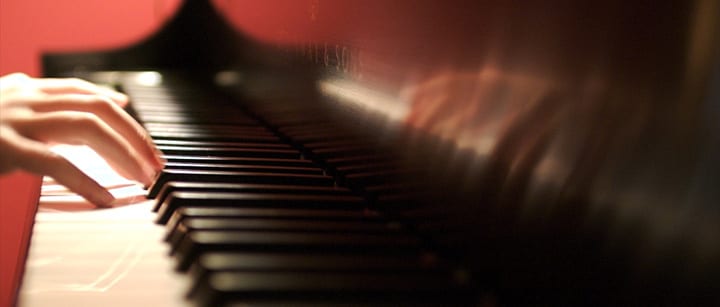 Want to really impress your friends and family? There are so many famous piano songs out there designed just for that! Here, Nutley, NJ teacher Christina C. shares five amazingly fast piano pieces, and her tips for mastering them…
Want to really impress your friends and family? There are so many famous piano songs out there designed just for that! Here, Nutley, NJ teacher Christina C. shares five amazingly fast piano pieces, and her tips for mastering them…
Playing piano is a lot of fun, but it is even more fun to play fast! It is an indescribable feeling when you have mastered a fast piano piece to the point where you can play it fast with no mistakes. It is almost as if your fingers play themselves (which is partially true because of muscle memory). In this article I’ll share some tips to help you accomplish your goal of playing fast piano pieces. Some of them are fast right from the beginning until the end. Some of them have incredibly fast sections, combined with slower parts as well. I encourage you to click, watch, and listen to all links below.
Five especially notable fast piano pieces are:
“Fantasie Impromptu in C# minor,” by Frederic Chopin
“Flight of the Bumblebee,” by Nikolai Rimsky-Korsakov
“Toccata,” by Khatchuturian
“Rondo alla Turca,” by Wolfgang Amadeus Mozart
“Toccata and Fugue in D minor” by J.S. Bach
When learning a fast piano piece, the first thing you should do is separate the piece into sections. Your piano teacher can help you do this. When you begin the first section, learn the right hand first. When you have an understanding of how it should be played (the notes, rhythm, fingering, etc.) by itself, then and only then should you begin learning the left hand part. Pieces should be learned each hand separately before trying to play it hands together. This method of learning has been researched and has been proven to be the most successful and easiest way to learn.
Whenever you begin learning a new piece, have your teacher play it from beginning to end so you can hear how it should sound when played properly. I have my students follow along with the eraser side of a pencil, for example, so their brain can see what the music they are looking at sounds like. You could also go online and hear different performers and their way of playing the piece (like the clips above) so that you have an idea of different interpretations. Remember though, aside from the rhythm and notes being correct, as well as the dynamics, the rest of the interpretation is up to the performer – YOU!
Do not go on to the next section until you have the first section learned playing hands together. In my experience as a teacher, I have found the most success doing it this way, rather than learning the entire piece hands separately, and then trying to go back and put the whole thing together. When you have the first section learned both hands together, that’s great! Now you are ready to begin learning the right hand of the second section! When you know the right hand of the second section well enough, learn the left hand separately, then put it together. Continue learning the piece in this manner with your teacher’s guidance, and you will soon know the whole piece. Do not try to play the piece fast until you are truly ready, because it will actually make it harder. You will hit wrong notes, and then the muscles of your fingers will learn and remember it wrong. It is so much easier and better in the long run to start slow, playing the notes and rhythm correctly, and then build up the speed when you are ready to play it faster.
Finally, always learn slowly. You can always speed it up – but playing it fast with wrong notes isn’t good, and will end up taking more time to go back and re-learn wrong notes and/or rhythm. So it really is worth it to take the time to divide the piece into sections, learn each hand separately, then slowly put together. As you learn the later sections, review the sections you have already learned, gradually building up speed in each section. Before you know it, you will have learned the whole piece! I hope these videos inspire you, and these tips help you achieve your musical goals! Have fun!
 Christina C. teaches piano, songwriting, composition, and music theory in Nutley, NJ. She received her Bachelor of Arts in Music and Psychology from Montclair State University. Christina has more than 15 years of teaching experience. Learn more about Christina C. here!
Christina C. teaches piano, songwriting, composition, and music theory in Nutley, NJ. She received her Bachelor of Arts in Music and Psychology from Montclair State University. Christina has more than 15 years of teaching experience. Learn more about Christina C. here!
Photo by lecates
Suzy S.

